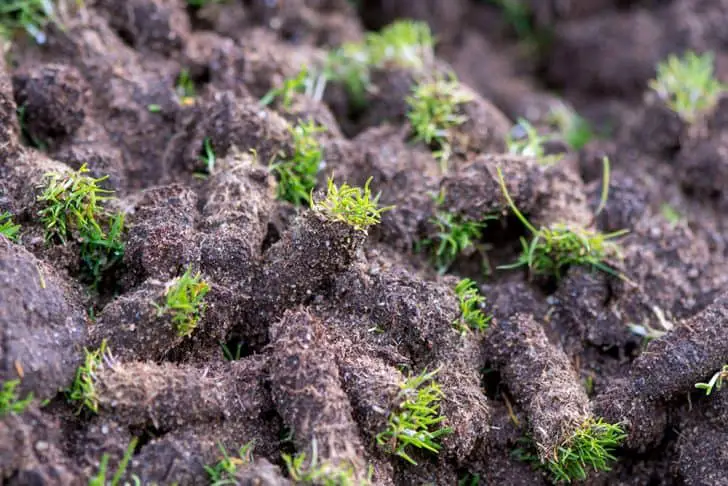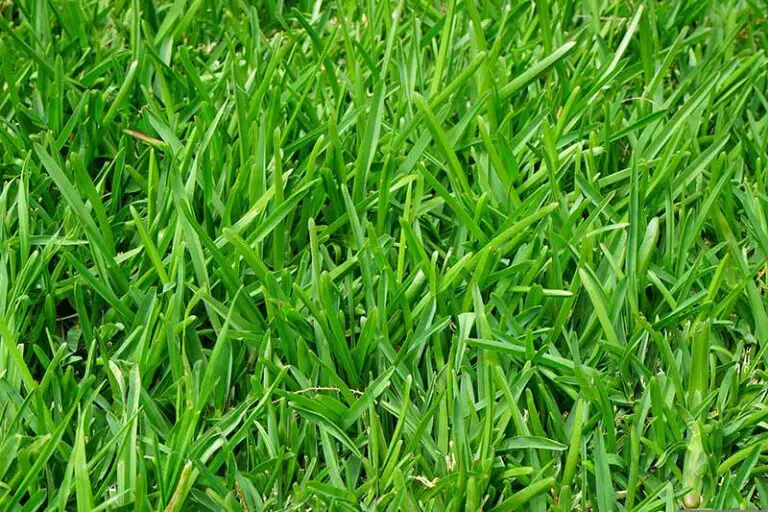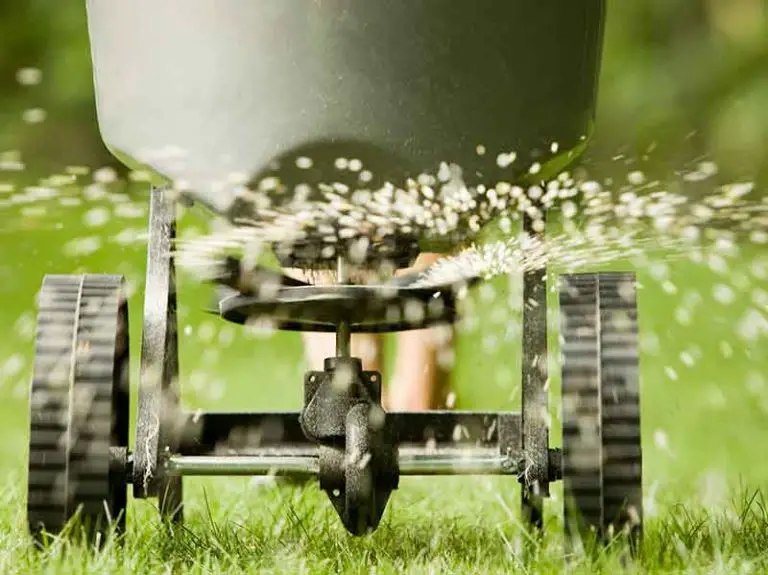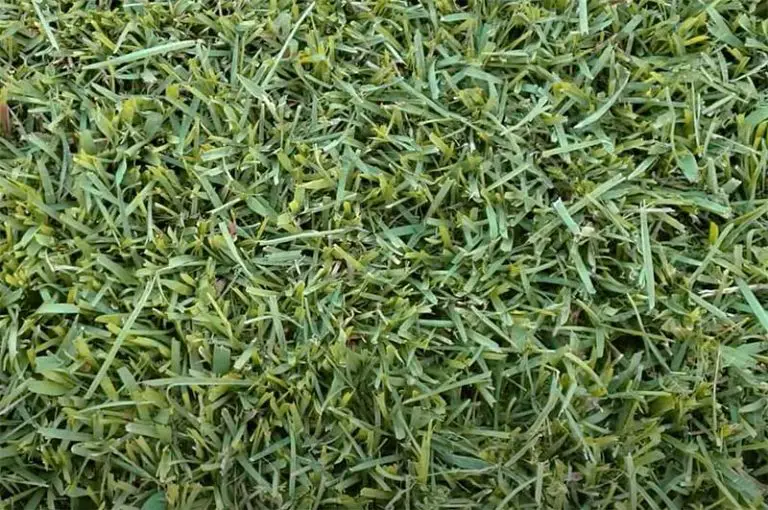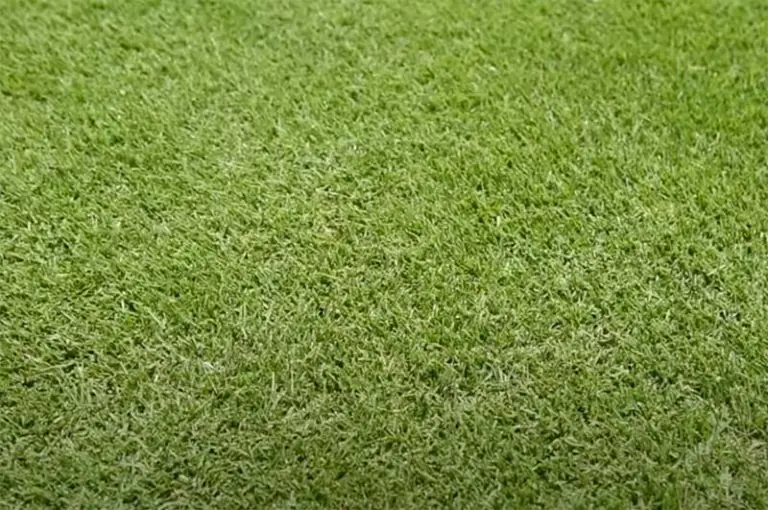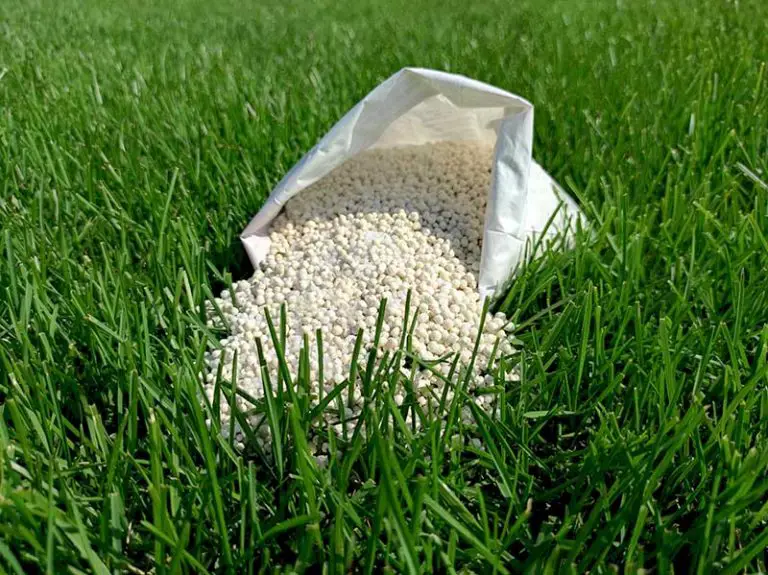The Ultimate Guide to Mulching Your Lawn or Garden
Mulching is the easiest way to improve the condition of your lawn or garden beds, bringing a number of benefits to the grass or plants growing in them. By mulching the soil, you can improve its water retention, suppress weed growth, and enrich it with nutrients and organic matter.
The basic steps of mulching a lawn involve choosing the best mulch to suit your needs, ridding the areas of weeds, and then laying the mulch in a layer of 1 to 4 inches thick. If using an organic mulch, you may also need to loosen the turf before laying it and water it in after application.
We explain the different types of mulch available to you, followed by information on when and how to mulch for best results.
What is Mulch?
Mulch is any substance you can use as a loose covering for the soil surface in your lawn, garden, or planting containers. Mulches can be made from both organic and inorganic matter, both types providing different benefits for soil and plants.
The process of mulching your lawn or garden involves adding a thick layer of this matter to the soil surface. Regardless of whether you use an organic or inorganic mulch, both types provide the same basic benefits; these include moisture retention, weed growth suppression, and protection of the plant roots. Gardeners also often use decorative mulch types for aesthetic purposes, placing them around trees, garden beds, or paths.

Why Mulch Your Lawn or Garden?
As we’ve mentioned, the benefits of mulching vary depending on the type of mulch you use. However, the basic goal is always the same with any type of mulch; that being to provide the area with a covering that protects the soil and plant roots while suppressing weed growth.
The extensive list of the potential benefits of mulching include:
- Moisture retention
- Reducing the necessity of irrigation
- Weed growth suppression
- Improving organic matter in the soil
- Providing soil with nutrients
- Deterring pests and unwanted animals
- Warming up soil quickly in spring
- Protecting roots from heat and frost
- Encouraging beneficial organisms in the soil
- Proving a barrier between edible crops and the soil surface
- Being used for aesthetic or decorative purposes
All types of mulch fall into one of two categories, being either organic or inorganic. While both types can provide the benefits listed above, there are some benefits that only organic mulches afford. We explain these different types of mulches in more detail in the following section.
Types of Mulch
There are many different types of materials you can use as mulch, including both organic and manmade matter. Organic mulches contain decomposing plant matter, such as that from compost, dead leaves, or grass clippings. Inorganic mulches, on the other hand, contain manmade materials like rocks and gravel, rubber, or landscape or plastic fabric.
Due to their composition, organic mulches break down gradually after they’ve been spread. Over time, this provides the soil with a boost in organic matter and nutrients as the matter decomposes. Organic mulches tend to be the preferable choice over inorganic mulches for this reason. With that said, many opt for inorganic mulches due to their long-term weed suppression abilities or for aesthetic reasons. Your choice ultimately depends on what features and benefits you want from your mulch.
Organic Mulch Types
Organic mulch types are made from entirely organic, decomposing plant matter. Common organic mulch types include:
Leaf Mulch
Shredded leaf mulch is a great all-purpose mulch type, being suitable for lawns, garden beds, vegetable gardens, and trees and shrubs. It enriches the soil with nutrients as the leaves decompose, acting as free organic fertilizer to any nearby grasses or plants. On top of this, leaf mulch encourages the presence of earthworms in the soil; these beneficial organisms keep the soil aerated and fertilized, playing a key role in the balance of the soil’s ecosystem.
For leaf mulch to be most effective, it’s necessary to shred the leaves as finely as possible. If mulching a lawn, this is as easy as mowing over the leaves several times with a regular or mulching mower and leaving the leaves where they fall. You could alternatively bag them for use in your other planting beds. The key to success is ensuring that the leaves are as small as possible; whole unshredded leaves tend to mat together in rainfall, causing potential issues with lawn fungus or mulch fungus.
Grass Clippings
Grass clippings are best for your lawn or more remote parts of your garden in which you wish to suppress weed growth. If you leave them on the lawn after mowing, they decompose quickly, providing the grass with a boost of nitrogen. You can also bag the clippings to use as mulch in your garden beds.
Take note, however, that grass clippings can become odorous and slimy as they decompose due to their high water content. They also have a tendency to mat together from rainfall or irrigation, which may prevent water from reaching the soil. For best results, use a mulching mower to mow the grass, letting the grass clippings fall on the lawn. Alternatively, bag them after mowing to use in your garden beds, or for other purposes around your property.
Bark Mulch
Bark mulch is most suitable for mulching around shrubs or trees, or in garden beds that you don’t tend to dig regularly, i.e. front walkways or foundation plantings. As these mulches are so woody, they don’t mix well with soil; this makes it difficult to move plants around if attempting to replant in a bed with bark mulch. It’s due to this reason that bark mulches are only recommended for use in certain areas.
The biggest benefit of bark mulches is that they last a lot longer compared to other types of mulch. Bark mulches break down more gradually as their woody composition takes longer to decompose. These mulches are also excellent for improving soil drainage and water retention in a planting bed or container.
Straw Mulch
Straw mulch is best suited for vegetable gardens, however, it is also a common mulch for covering grass seed. The dense texture of the straw is ideal for forming a barrier that blocks soil-borne diseases from reaching plant foliage. You can also use it to protect grass seed from birds, or to make garden paths less muddy.
Due to its composition, straw mulch takes a long time to decompose, providing your lawn with its benefits for longer. This means you will likely only need to apply a layer of straw mulch once per growing season. An additional benefit of this mulch type is that it creates an inviting habitat for yard-friendly insects such as spiders. While you may wish to get rid of spiders, these creatures help to control the populations of other invasive pest species.
Pine Needle Mulch
Pine needle mulches are best for around trees or shrubs, or in flower beds. Although pine needles are slightly acidic, this mulch shouldn’t have much of an effect on the pH of your soil.
Pine needle mulch is particularly resistant to some types of mulch fungus. A drawback of this mulch is that it tends to be harder to spread; however, it holds its shape well after application and can be reshaped to your liking with ease. It’s advisable to wear long sleeves and gloves when working with pine needle mulch to protect your hands and arms. If you’re concerned about acidity levels, make sure to test your soil pH regularly to monitor any fluctuations after using pine needle mulch.
Shredded Paper
Shredded paper and newspaper are suitable mulching materials for flower beds and vegetable gardens. As the majority of inks are organic and soy-based, there’s no need to worry about the ink on the paper; the organic inks pose no risk to plants.
The main benefit of using shredded paper mulch is that it significantly improves water retention in the soil. This works to keep the roots of nearby plants sufficiently and consistently moist. A thick layering of paper also helps to maintain soil temperatures and reduce weed growth in the area. With enough layers of paper, it’s possible to smother grass in an area to quickly create a new garden bed.
Mushroom Compost
Mushroom compost is an ideal mulch for use around alkaline-loving plants and vegetable crops due to its high pH. Some examples of alkaline-loving crops include kale, cabbages, and broccoli.
Mushroom compost is light in texture and easy to work with. However, you should avoid using this type of mulch around ericaceous plants such as rhododendrons, heathers, and camellias; these plants will particularly suffer in soil with a raised pH.
Well-Decomposed Horse Manure
Well-decomposed horse manure is a great mulch for hungry plants and vegetables, such as roses, squashes, and pumpkins. As it decomposes, this mulch provides a huge boost of nutrients to the nearby soil and plants.
When using this type of mulch, it’s essential that the manure is very well-decomposed; i.e. it needs to have been rotting for a minimum of two years. If the manure is too fresh, it can burn grass or plant foliage and actually remove nutrients from the soil.
Living Mulch
Living mulches are best for both lawns and flower beds. These are a category of living plants that provide planting areas with the same benefits that a mulch would. Examples include ground cover plants such as clover or vetch, or ground-hugging plants like phlox or creeping thyme.
All of these living mulches, particularly the cover crops, provide all the benefits of a traditional mulch. They shield the soil surface from sunlight, in turn helping it to retain moisture. Living mulches also work to suppress weed growth by preventing sunlight from reaching weed seeds on the soil surface. The only drawback to living mulches is that many dislike their appearance. However, they are a great mulch type for your lawn or garden if you’re not concerned with how it looks. For instance, while many opt to remove clover because they see it as a weed, there are many benefits to planting clover on your lawn.
Inorganic Mulch Types
Inorganic mulches are those made from non-organic materials that do not break down over time. Examples of common inorganic mulches include:
Rock or Gravel Mulch
Mulches made from rocks or gravel are best for planting areas in which there is a particular requirement for drainage. For instance, around heat-loving plants, gravel or rain gardens, or Mediterranean herb gardens. These mulches help to seal moisture in the soil while also suppressing weed growth in the planting area.
The biggest drawback with rock or gravel mulches is that they’re difficult to completely remove from an area after application. They may also cause the temperature of the planting area to become too hot for nearby plants to survive. It’s for this reason that rock mulches are only suitable for use around heat-loving plants.
Glass Mulch
Glass mulch is best for use around plants that prefer to grow in rocky soil. These mulches are made from small pieces of smooth recycled glass. You can place them anywhere in your yard where you’d put rocks or pebbles for both mulching and aesthetic purposes.
The downside to using glass as a mulching material is that it’s one of the more expensive mulching options. Also, take note that you will need to add an extra layer of landscape fabric between the mulch and soil surface; this is to prevent the glass from sinking too deeply into the soil over time.
Landscape Fabric
Landscape fabric is suitable for beds that you don’t weed or fertilize regularly, i.e. trees, shrubs, and foundation plantings. The fabric makes it impossible to access the beds for these purposes, but this isn’t an issue for such beds. The fabric is porous, meaning water is still able to pass through and reach the plants underneath.
The main drawback of landscape fabric is that geotextiles such as these typically degrade over time as they’re exposed to light. To counteract this, you can cover the fabric with a second layer of a different type of mulch – some may opt to do this based on aesthetic reasons, as the fabric can be visually unappealing. Also, take note that if you use landscape fabric around your shrubs, their roots may grow up into the fabric; this means the roots will be ripped up upon removal of the mulch.
Plastic Sheeting
Plastic sheeting is best for use in vegetable gardens. When spread over the soil, the black color of the sheeting transfers heat from the sun to the soil surface. This creates a microclimate that typically measures to be about three degrees warmer than its surroundings.
Plastic sheeting provides the usual benefits of a mulch, including the suppression of weeds and the soil’s moisture retention. On top of this, plastic sheeting helps to protect the fruits of vining crops from rotting, such as strawberries, melons, and cucumbers. As this type of mulch blocks sunlight entirely, it is only suitable for use on grass you wish to smother.
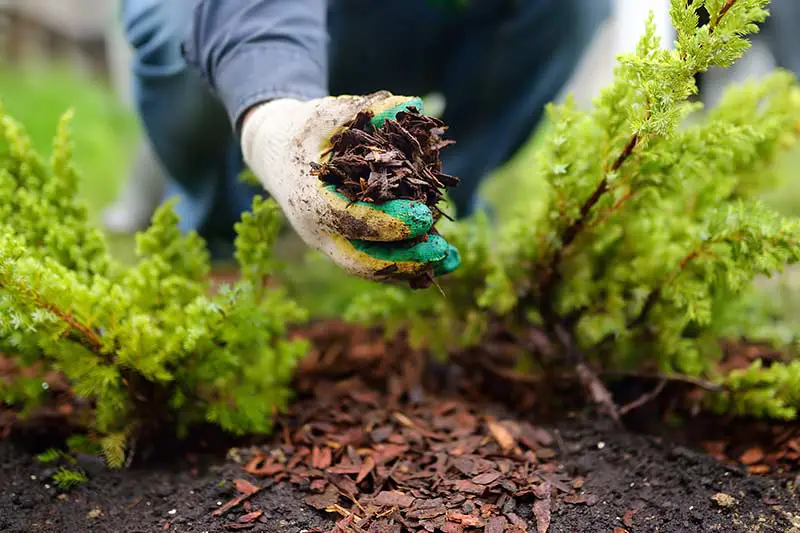
When to Mulch
The best times of year to mulch are either during the early spring and late fall to winter months. Deciding whether you should mulch in spring or fall depends on a few factors, which we discuss in more detail below.
Mulching in Spring
If you fit any of these conditions, you should mulch in spring:
You Want To Improve the Look of Your Yard
Mulching in the spring is an easy way to completely refresh the look and feel of your outdoor spaces. You can use mulch to beautify your garden beds and add some visual contrast against your flowers, vegetables, and herbs. It isn’t possible to achieve this same effect if you choose to mulch in fall or winter as the soil and mulch look dull at this time of year.
You Live in a Dry Area
It’s preferable to mulch in early spring for those living in a dry area. Mulching will help the soil to retain moisture, in turn supporting our early spring growth throughout the warm, dry months. Take note that if you have had a wet winter, wait until mid or late spring before adding your mulch; if you add it before the turf has had a chance to dry out, it’ll trap too much moisture in the soil. This can lead to root rot in the nearby plants.
You Have an Issue With Weed Growth
Mulching in spring is an effective way to combat recurring yearly issues with aggressive weeds in your lawn or garden. The majority of weeds grow in spring, and require access to sunlight to do so. By adding a layer of mulch, you block light from reaching any weed seeds on the soil surface, preventing their germination. This provides a great organic solution to controlling weeds in your lawn or garden without the use of chemical herbicides.
Mulching in Fall or Winter
If you fit any of these conditions instead, you should mulch in fall or winter:
Your Soil is in Poor Condition
You should use an organic mulch in fall or winter if you wish to improve soil in a poor condition. The organic matter in the mulch will decompose slowly over winter, enriching the soil with the nutrients it needs for the following spring. This will get the soil in the best condition possible for the season’s new growth.
You Live in Area with Extreme Cold Temperatures
Mulching in fall or winter is preferable if you live in an area that tends to have extremely cold temperatures. A layer of mulch insulates the soil surface and plant roots against the cold; this prevents them from freezing and dying off completely before the growing season. If you also see a lot of rainfall, mulching will help to reduce the amount of soil erosion that occurs.
You’re Busy in the Spring
Mulching in the fall or winter may be preferable if you’re usually busy with other gardening and planting activities in the spring. You can keep an eye on the soil as its condition changes over winter, giving you plenty of time to make extra amendments before the next season.
You’re Growing Perennials
If you’re growing any perennials in your garden, add a layer of mulch to them in the fall or winter. At this time of year, your perennials go dormant and remain that way until spring. Adding a layer of mulch helps them to survive the harsh conditions of winter.
How to Mulch (Step-by-Step)
In this section, we explain the basic steps on how to mulch a lawn or garden for best results.
1. Purchase Appropriate Mulch
Purchase your mulch of choice, either being an organic or inorganic material. As we’ve explained, your choice will depend on the features that you want to get out of your mulch. Organic mulches are typically preferred due to their additional fertilization benefits. However, inorganic mulches are better suited to protecting new seeds and crops and are often used for aesthetic improvements. Choose your mulch taking factors such as these into consideration.
2. Clear Area of Weeds
Before you start to lay mulch, you need to clear the area-to-be-mulched so that it’s free of weeds. Use a garden spade or trowel to dig out visible weeds in the lawn or garden bed. Make sure to remove the entirety of the weed, along with its roots, leaving behind no fragments. This step is essential to prevent weeds from growing beneath the mulch layer.
Alternatively, you can apply weed killer before laying the mulch to kill the weeds. While chemical herbicides are less favorable than organic methods, they are sometimes necessary in the case of severe weed infestations. You can use a selective weed killer to kill specific weeds, such as a broadleaf weed killer on clover. You may need to use a non-selective weed killer; however, you should take note that these weed killers kill any and all plants on contact. Read the label of your chosen product for its specific application and safety instructions.
3. Remove Old Mulch if Necessary
Skip this step if you haven’t previously used a mulch on your lawn or garden bed, or if you’re using a similar mulch. If using a new mulch type, you will need to remove the old mulch by digging it away with a shovel. Scrape off the old mulch and transfer it into a wheelbarrow to discard elsewhere. Remove all of the mulch until you can only see the dark brown layer of topsoil. You can place this old mulch into your compost pile.
4. Loosen Hardened Turf
After clearing the area, you’ll also need to loosen the turf in preparation to lay the mulch. Use a garden fork to turn up the turf, paying particular attention to areas of hardened or compacted soil. If mulching with an organic mulch, this step gets the soil in the best condition to receive nutrients from the decomposing matter. To give your soil an extra boost at this stage, you could also work peat-free compost or an enriching soil improver into the ground.
5. Lay the Mulch
Before laying the mulch, lightly dampen the soil surface of the lawn or garden bed; this will help to keep it in place. Place your mulch into a wheelbarrow to transport it to the mulching area. Shovel 3 to 4 small piles of mulch evenly throughout the area. Then, use a rake to even out the piles even further into a uniform layer. If using a large, inorganic mulch, you may find it easier to spread it with your hands.
In terms of thickness, how thick of a layer of mulch you spread depends on the purpose of your mulching:
Mulching during the spring or summer – 1 to 2 inches
Mulching during the winter for weed prevention – 2 to 4 inches
Mulching vegetable beds in the winter – 4 to 6 inches
Make sure to leave 1 inch of clearance between the mulch and the bottom of any nearby trees or plants. This prevents the mulch from smothering the plants or causing them to become waterlogged or rotten.
6. Water-in the Mulch
Skip this step if you’re using an inorganic mulch. After laying an organic mulch, it’s best to water them in to add some moisture and prevent them from blowing away. Water sparingly to avoid waterlogging the mulch or nearby plants straight away.

